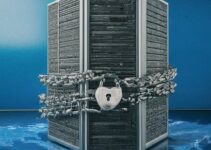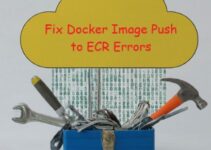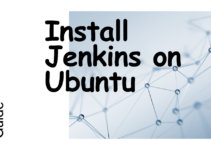“Modernizing the legacy IT infrastructures has become a necessity to keep pace with digital transformation and disruption as no organization can afford to weigh down under the burdens of traditional IT systems by becoming outmoded in the contemporary world.”
The world is evolving at a rapid pace so should your legacy IT infrastructure. In today’s digital era, sticking too long to age-old traditional processes can negatively impact business continuity by putting survival at stake. Modernizing legacy applications with DevOps could be the key to solve the puzzle.
Understand How to Modernize Your Legacy System The DevOps Way
DevOps gears up organizations embracing and adopting modernization to improve agility, drive innovation and equip them to deliver exquisite experiences. Let’s quickly understand how can organizations leverage modernization,
- To save cost, improve the time-to-market and achieve high performance.
- To provide delightful customer experiences and encourage collaboration.
- To gain a competitive edge and an advantage by developing resilient solutions.
- To accomplish business goals with robustness, agility, and transparency.
- To facilitate remote work and seamlessly operate in smart virtual ways.
- To adopt an Agile approach in collaboration, coordination, and communication.
- To empower teams to encourage collaboration and foster a culture of innovation.
- Get scalability, transparency, and flexibility benefits to achieving efficiency.
DevOps represents cultural changes across the organization. Instead of working on a whole system, teams can now develop small, independent, and easily-deployable units. The combination of cloud computing, microservices, and DevOps fit perfectly for IT modernization projects.
DevOps must be adopted and executed by every organization to become proactive and robust, critical in IT modernization. Let’s explore the essential elements of DevOps that matter in modernization,
- People – DevOps combines people, processes, and tools to assist modern startups and enterprises to effectively face the challenges. People plan, design, and implement strategies to help achieve modernization goals. DevOps establishes a people-first culture, brings cultural and technical transformation across the teams, collaborates the team, and propagates an automation-first mindset.
Automation is the secret to legacy modernization, and with automation, teams can plan a visionary approach and devise a clear strategy for modernization. DevOps unites people across various functions who have a shared vision as everyone is part and parcel of modernization.
“With people in place, modernization builds and improves organizations’ capability to deliver sustainable performance and improve customer experience.”
- Process – Modernization involves transforming the traditional and manual processes into automated and more innovative approaches. Frequent changes in codes may delay response or disrupt the workflow, whereas agility in processes and faster decisions are critical to accelerating time-to-market. DevOps focuses on automation and iteration to manage code pipeline and delivery and bridges the gap between development and operation environments.
DevOps’ goal is to transform manual processes into automated ones by capitalizing on the tools and technology to reduce time and cost and increase efficiency and performance. DevOps is critical to deal with the changes in processes that require flexibility and agility.
“With a process in place, modernization becomes an important strategy to maximize profits, accelerate growth, and ensure continuity.”
- Tools – Legacy systems suffer from unbridled discoordination among teams as manual deployment, testing, and configuration management consume a considerable amount of time. Automation is quintessential as streamlined workflow processes and tools play a crucial role in the modernization journey.
DevOps brings ease to the development and operation environment by introducing tools that empower developers to develop, test, and deploy frequently. The technology stack needs to be stable, agile, and flexible to survive disruption. DevOps offers seamless progress as developers can automatically deploy the changes on a sprint-by-sprint basis without focusing too much on manual testing.
“With tools in place, modernization becomes a top priority of every organization irrespective of its size, function, and scale.”
How Can DevOps Help Organizations Fast-track Modernization?
By involving transformative changes in architecture and services, modernization incorporates re-engineering and rebuilding to allow organizations to operate with modern automation-driven and intelligent processes. Switching from manual to automated process is an important goal of DevOps approach to modernization. DevOps can help organizations to fast-track modernization by,
- Transforming a monolithic system into independently-deployable microservices.
- Guiding about cloud technologies for better scalability, flexibility, and performance.
- Driving the environment of automation and fostering the culture of innovation.
- Executing practices such as continuous integration, testing, and deployment.
- Using container orchestration to automate deployment, management, etc.
- Enabling continuous improvement, continuous monitoring, and continuous analysis, and more.
What Next? – DevOps In 2021 And Beyond!
- DevOps adoption among forward-looking organizations is likely to gain more traction as it is all set to spur innovation in the digital age. Undoubtedly, the COVID-19 pandemic has accelerated the world’s pace and attitude towards digitization. DevOps encompasses people, processes, and cultural changes, and DevOps teams help organizations deliver digital services.
- DevOps will become BizDevOps (Business, Development, and Operations) in 2021. BizDevOps adoption will witness a spike among organizations that want to become Agile and embrace complete digitalization. It facilitates business innovation processes, minimizes the risks, improves efficiency, and streamlines IT efforts to achieve business objectives.
- DevOps must leverage the right set of tools to realize the desired business goals. Infrastructure automation tools facilitate teams with multi and hybrid cloud infrastructure orchestration and robust application delivery. These tools inject automation in delivery, configuration, and management of IT infrastructure.
- Embedding security in DevOps has become indispensable in the modern world. DevSecOps is the amalgamation of security and compliance testing into development pipelines to safeguard assets by strengthening security. CISOs will embrace DevSecOps to ensure that the deployments are not robust but are secured.
To Conclude:
Previously, legacy systems were heavily focused on long processes, lengthy decision-making, and DevOps came to the rescue by introducing more minor, continuous, and robust changes to enable faster response time and an excellent user experience. Automated tools and technology help in achieving more efficiency and higher performance. Modern-age organizations leverage DevOps to embrace modernization, which has become an integral part of digital transformation strategies!











The article beautifully illustrates the transformative power of DevOps in modernizing legacy systems, highlighting its efficiency, adaptability, and the positive impact it can have on overall business operations. A must-read for any organization seeking to leverage cutting-edge practices for sustained growth and innovation. Thank you for sharing 🙂